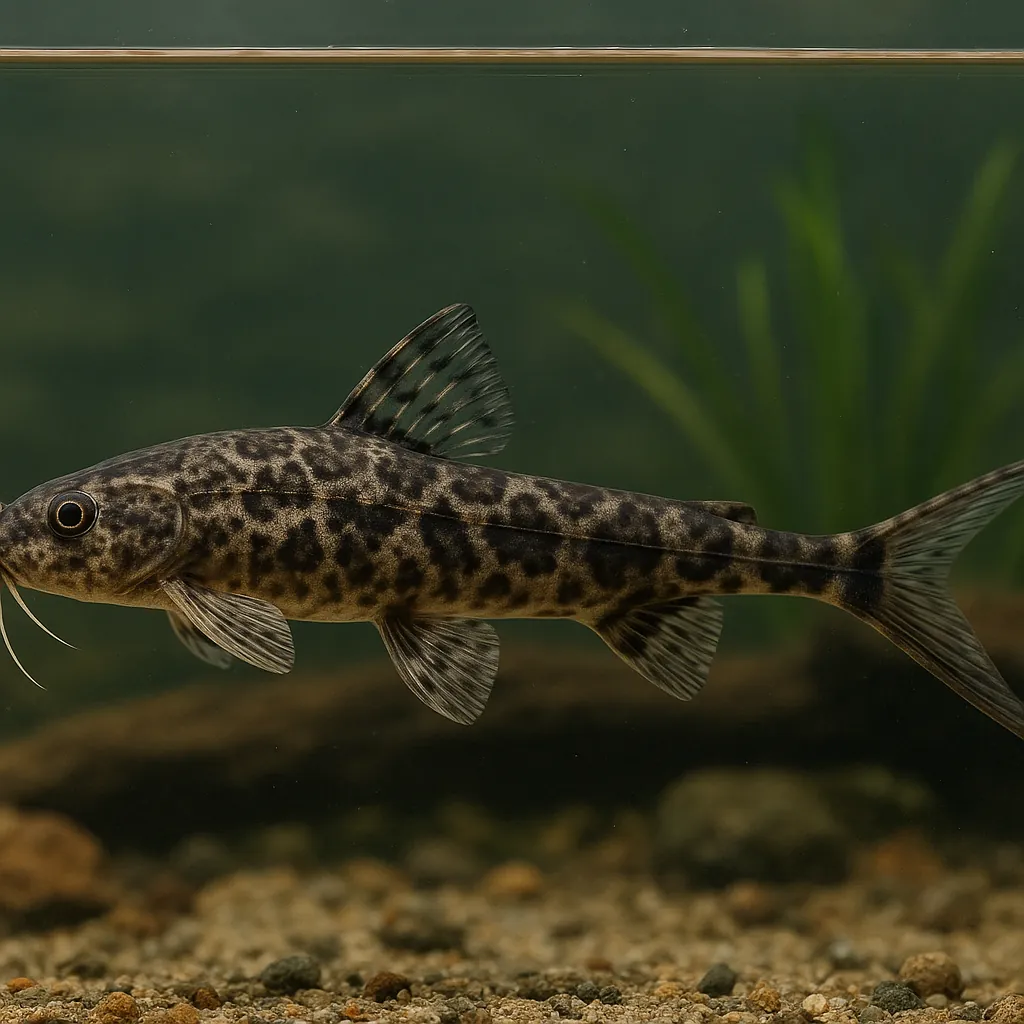
Marbled whiptail
Introduction
The Marbled Whiptail, scientifically known as Loricaria simillima, is a captivating freshwater catfish cherished by aquarists for its unique appearance and peaceful demeanor. With its elongated body adorned with intricate marbled patterns, this species adds a touch of elegance to any aquarium. Suitable for both beginner and intermediate fishkeepers, the Marbled Whiptail is relatively easy to care for, provided its specific environmental and dietary needs are met.
What makes the Marbled Whiptail a popular choice among aquarists?
Its distinctive marbled pattern and tranquil nature make it an attractive addition to community tanks, especially for those seeking a unique bottom-dwelling species.
Is the Marbled Whiptail suitable for novice fishkeepers?
Yes, with proper care and attention to its habitat requirements, the Marbled Whiptail is well-suited for beginners.
Care and Environment
Providing an optimal environment is crucial for the health and well-being of the Marbled Whiptail. Here's a comprehensive guide to their care:
What is the minimum tank size required for a Marbled Whiptail?
A minimum tank size of 70 liters is recommended for a single Marbled Whiptail. For groups, a larger tank is advisable to accommodate their social nature and provide ample space.
What are the ideal water parameters for this species?
Maintain a temperature between 24°C and 27°C, a pH range of 5.6 to 7.8, and water hardness between 1 to 20 dGH. Regular monitoring and maintenance of these parameters are essential for their health.
How should the tank be set up to mimic their natural habitat?
Use a soft, sandy substrate to replicate their native riverbeds. Incorporate plenty of hiding spots using driftwood, smooth rocks, and caves, as these fish appreciate shaded areas. Live plants can also be added, as they won't harm them and provide additional cover.
What type of filtration and lighting is recommended?
A gentle to moderate water flow is ideal, so choose a filter that provides efficient filtration without creating strong currents. Subdued lighting is preferred to mimic their natural environment and reduce stress.
What should their diet consist of?
Marbled Whiptails are omnivorous, primarily feeding on aquatic invertebrates in the wild. In captivity, offer a varied diet including live and frozen foods like bloodworms, daphnia, and chopped earthworms. Supplement with high-quality sinking pellets and occasional vegetable matter such as cucumber or zucchini slices.
Are there any specific challenges in keeping Marbled Whiptails?
They are peaceful and can be outcompeted for food by more aggressive tankmates. Ensure they receive adequate nutrition by monitoring feeding times and providing food directly to their preferred areas.
Origin and Habitat
The Marbled Whiptail is native to various regions in South America, including Venezuela, Ecuador, Peru, Brazil, Paraguay, and Argentina. They inhabit a range of environments such as whitewater and blackwater streams, rivers, and tributaries. These habitats can vary from soft and acidic to medium-hard and fairly alkaline waters. The fish are often found in areas with sandy substrates, submerged driftwood, and ample hiding spots, which provide shelter and feeding grounds.
Where can Marbled Whiptails be found in the wild?
They are distributed across several South American countries, including Venezuela, Ecuador, Peru, Brazil, Paraguay, and Argentina.
What types of water bodies do they inhabit?
They are found in diverse habitats, including whitewater and blackwater streams, rivers, and tributaries.
What are the typical environmental conditions of their natural habitat?
These environments often feature sandy substrates, submerged driftwood, and varying water chemistries ranging from soft and acidic to medium-hard and alkaline.
Temperament and Compatibility
Marbled Whiptails are known for their peaceful and non-aggressive nature, making them excellent candidates for community aquariums. They are generally amicable with conspecifics and can be kept singly or in groups.
Are Marbled Whiptails suitable for community tanks?
Yes, their peaceful demeanor allows them to coexist harmoniously with other non-aggressive species.
What are ideal tank mates for Marbled Whiptails?
Suitable companions include small characins, peaceful cichlids, and other gentle catfish like Corydoras. Avoid housing them with aggressive or overly active species that may outcompete them for food.
Do they exhibit any territorial behavior?
They are generally non-territorial but may display slight territoriality during spawning periods.
Interesting Facts
Marbled Whiptails possess several intriguing traits that captivate aquarists:
How do Marbled Whiptails reproduce?
They are paternal mouthbrooders. After spawning, the male carries the eggs in his enlarged lower lip, aerating them until they hatch.
What unique physical feature do males develop?
Mature males develop significantly enlarged mouthparts, which play a role in their reproductive behavior.
Are they effective algae eaters?
While they may graze on biofilm and algae, they are not primarily algae eaters and should not be relied upon for algae control in the aquarium.
Sources
All information in this article has been gathered from the following reputable sources:
Overview
Recommended Tank Size 39.6 Gallons (for groups of 3 or more) |
Minimum Group Size 1 |
Minimum Tank Volume 18.5 Gallons |
Maximum Adult Length 7.1 inches |
Average Adult Length 7.1 inches |
Shoaling (6+ required) No |
Preferred Water Type Freshwater, soft to medium-hard, slightly acidic to neutral |
Temperature Range (°C) 24–27 |
pH Range 5.6–7.8 |
Water Hardness (dGH) 1–20 |
Typical Lifespan (years) 5 years |